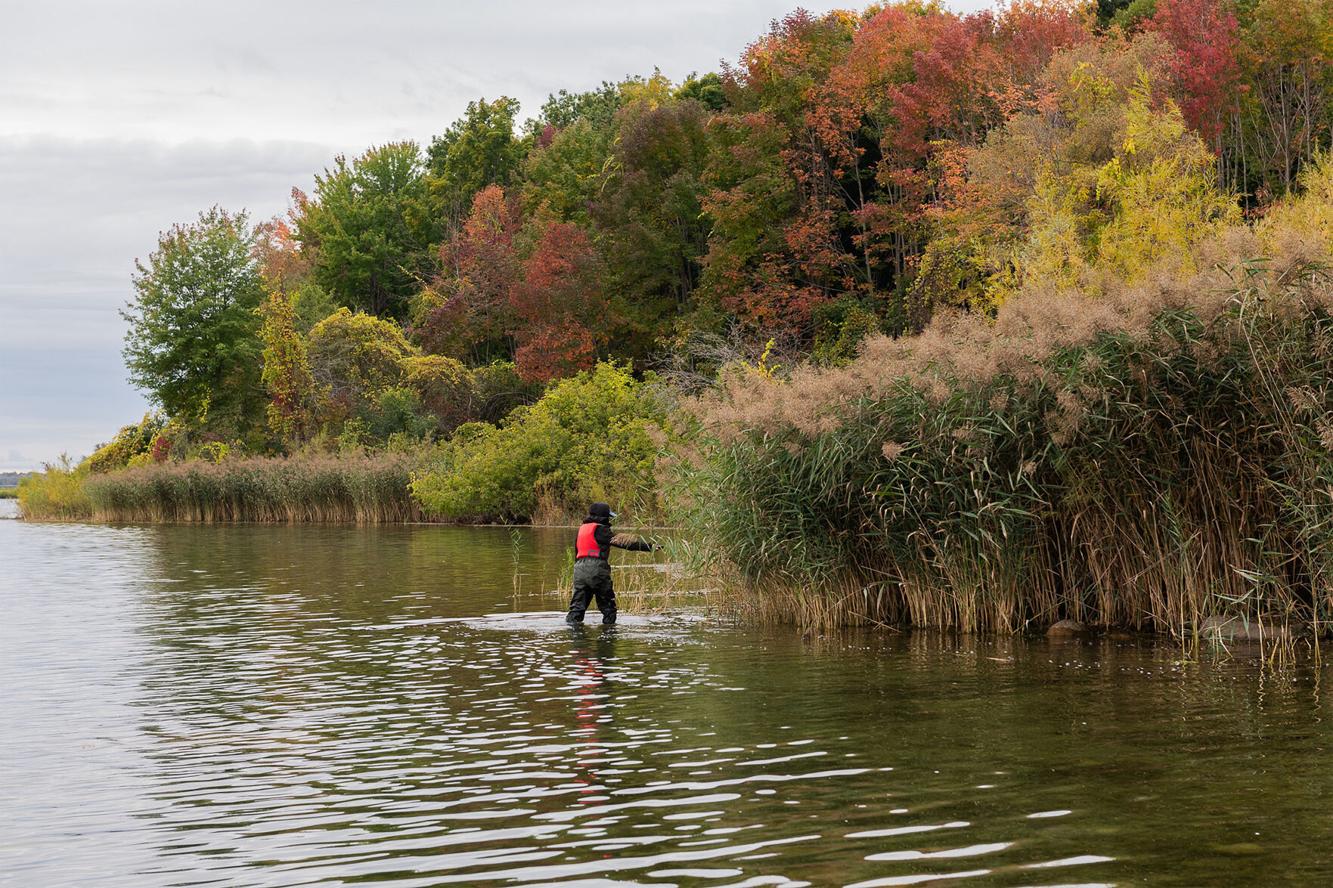Ontario is spending more than $50 million a year to fight a growing army of invasive species that are threatening the province’s ecosystems, infrastructure, and economy. From towering phragmites clogging roadside ditches to bloodsucking sea lamprey in the Great Lakes, these non-native plants, animals, insects and pathogens are reshaping landscapes, driving up costs, and endangering native species.
According to the Invasive Species Centre, municipalities and conservation authorities across Ontario spend approximately $50.8 million annually battling invasives. Forestry alone suffers annual timber losses estimated at $720 million, as 61 million cubic metres of timber are affected nationwide.
These species, often introduced accidentally through shipping, trade, or horticulture, can cause flooding, weaken climate resiliency, lower property values, and even lead to job losses. Below are some of Ontario’s most damaging invaders.
Phragmites
The European common reed is considered Ontario’s most destructive invasive plant. It grows in dense, tall patches that choke out native vegetation, clog drainage ditches, block drivers’ sightlines, and disrupt turtle nesting habitats. It alters ecosystems through chemical secretions from its roots, which prevent other plants from growing. Managing one kilometre of phragmites along roadsides costs about $1,100, and over 80 control projects are currently underway through the province’s $11 million Invasive Phragmites Control Fund.
Sea Lamprey
Nicknamed “vampire fish,” sea lampreys are eel-like parasites that entered the Great Lakes via shipping canals in the 1920s. With a suction-cup mouth full of teeth, each lamprey can kill up to 18 kilograms of fish during its feeding stage. The Great Lakes Fishery Commission spends roughly $25 million annually to control them and protect a $5.1-billion fishing industry that supports 75,000 direct jobs.
Buckthorn
Listed as a noxious weed under Ontario’s Weed Control Act, common buckthorn is a hardy shrub that leafs early in spring and keeps its foliage late into fall, shading out native species. Treating infestations costs an average of $202 per hectare, depending on density and methods used.
Asian Longhorned Beetle
While successfully eradicated from Toronto and Mississauga after five years of surveillance, the beetle remains a serious threat to maple trees. A new outbreak could cost between $8.6 and $12.2 billion to remove and replace impacted street trees. The maple industry, valued at $358 million annually, is also at risk.
Hemlock Woolly Adelgid
This aphid-like insect, the size of a sesame seed, has been detected in Etobicoke, Fort Erie, Niagara Falls and Hamilton. It kills hemlock trees by draining nutrients from their needles, leading to discoloration and premature needle loss. Native to East Asia, it likely arrived through infested nursery stock.
Dog-Strangling Vine
Also known as swallowwort, this fast-growing vine can reach two metres high, smothering native plants and young trees. It poses a threat to monarch butterflies, whose larvae mistake its leaves for milkweed. The species is restricted under Ontario’s Invasive Species Act, making it illegal to sell or transport.
Garlic Mustard
Though edible, garlic mustard emits root chemicals that suppress native seedlings. This aggressive forest invader spreads quickly along roadsides and trails, with seeds carried by humans and pets. It has become one of southern Ontario’s most persistent invasive plants.
Stopping the Spread
The Invasive Species Centre urges the public not to purchase or release invasive species into the wild, to clean and dry watercraft between lakes, avoid moving firewood more than 15 kilometres, and report sightings to the Invading Species Hotline (1-800-563-7711) or EDDMaps.org. Early detection and community involvement are critical to managing invasions before they become unmanageable.

